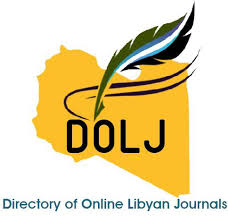Investigation of the effect of POMC peptides on dermal fibroblast migration and its role in wound healing
DOI:
https://doi.org/10.54361/Keywords:
Fibroblasts, immunohistochemistry, wound healing, POMIC peptidesAbstract
he human skin contains several different fibroblast subtypes including dermal sheath (DS), dermal papilla (DP) and inter-follicular dermis cells (DF). It has been shown that quicker healing and less scar formation is related toproportionally fewer numbers of DS and DP fibroblasts. TGF-β plays a crucial role in wound healingby attracting fibroblasts and promoting their synthesis of collagens I, III, and V, proteoglycans, fibronectin and other extra cellular matrix (ECM) components; and that the POMC peptides α-MSH/ ACTH may ameliorate hypertrophic scaring by antagonizing TGF-β. The aim of this project was to assess the role of POMC peptides α-MSH/ ACTH in modulating migratory activity of fibroblasts in vitro using scratch assay with or without POMC peptides and the transwell assay in the presence of the extracellular protein fibronectin. Transwell assay showed that fibronectin increased fibroblast sub-types migration with DS cells migrated through fibronectintranswells more effectively than other fibroblast sub-types. POMC peptides, ACTH induced the greatest increase in migration with fibronectin coated wells. In addition, scratch assay showed that the fibroblast migration was significant in the presence of the POMC peptides.
Downloads
References
Böhm M, Metze D, Schulte U, Becher E, Luger TA, and Brzoska T. (1999): Detection of melanocortin-1 receptor antigenicity on human skin cells in culture and in situ. Exp. Dermatol. 8, 453-461
Böhm M and Luger TA. (2000): The Role of Melanocortins in Skin Homeostasis. Horm. Res. 54, 287-293
Branton, M. H. & Kopp, J. B. (1999) TGF-beta and fibrosis. Microbes Infect. The American Journal of Surgery 1:1349-1365.
Catania A and Lipton JM. (1993): α-Melanocyte-stimulating hormone in the modulation ofhost reactions. Endocr Rev14: 564
Eichler MJ and Carlson MA (2006):Modeling dermal granulation tissue with the linear fibroblast-populated collagen matrix: a comparison with the round matrix model. J Dermatol Sci. 41(2): 97-108
Eves P, Layton C, Hedley S, Dawson RA, Wagner M, Morandini R, Ghanem G, Mac Neil S. (2000): Characterisation of an in vitro model of human melanoma invasion based on reconstructed human skin. Br J Dermatol142: 210
Freinkel, R. K. Woodley, D. T. eds. (2001): The Biology of the Skin. Parthenon Publishing New York, NY 191-297
Grinnell, F. (1994):"Fibroblasts, myofibroblasts, and wound contraction". J. Cell Biol124 (4): 401-404.
Hall A. (2005):Rho GTPases and the control of cell behaviour, MRC Laboratory for Molecular Cell Biology and Department of Biochemistry and Molecular Biology, Cancer Research UK Oncogene and Signal Transduction. Biochemical Society Transactions 33: 891-895
Hinz.B (2006): The role of matrix adhesions in myofibroblast force perception and transmission. European Journal of Cell Biology, 85 (3-4): 175-181
Jahoda CA, Oliver RF, Reynolds AJ, et al. (2001b): Trans-species hair growth induction by human hair follicle dermal papillae. ExpDermatol. 10: 229–237
Jahoda CAB, and Amanda J Reynolds. (2001a): Hair follicle dermal sheath cells: unsung participants in wound healing. The lancet, 358 (9291), 1445-1448
Luger TA, Brzoska T, Scholzen TE, Kalden DH, Sunderkotter C, Armstrong C, Ansel J. (2000): The role of α-MSH as a modulator of cutaneous inflammation. Ann. NY Acad. Sci. 917: 232
Luger TA, Schwarz T. (1995): Effects of UV-light on cytokines and neuroendocrine hormones. In: Krutmann J, Elmers C (eds). PhotoimmunologyOxford: Blackwell, 55- 76
MacNeil S. (2007): Progress and opportunities for tissue-engineered skin. Nature 445 (7130): 874-80.
Millington G. (2006):Proopiomelanocortin (POMC): the cutaneous roles of its melanocortin products and receptors. ClinExpDermatol31, 407-412.
Montagna W, Yun J, Formisano V (1964): Histology and cytochemistry of human skin. XXX. Cholinesterase-containing nerves in face. Arch Dermatol 90:526-529
Mulvaney M, Harrington A, James WD., Davies LB, Quick and Siegel (1994): Cutaneous trauma and its treatment. Military dermatology, Washington, DC: Office of the surgeon General at TMM publication. 143-156
Romo T, Presti PM, Yalamanchili HR. (2006):Medpor alternative for microtia repair. Facial PlastSurgClin North Am. 14(2):129-36
Ruta M, Saleniece K, Riekstina U, Krigere L, TirzitisG and Ancans J. (2007):Betulin binds to melanocortin receptors and antagonizes α-melanocyte stimulating hormone induced cAMP generation in mouse melanoma cells. Cell Biochemistry and Function, 25 (5): 591-596
Schreier T, Degen E, BaschongW. (1993): Fibroblast migration and proliferation during in vitro wound healing. Res Exp Med, 193(4): 195-205
Slominski A, Wortsman J, Szczesnlewski A. (2000a) Liquid chromatopgraphy mass spectrometry detection of corticotropin-releasing hormone and proopiomelanocortin- derived peptides in human skin. J ClinEndocrinolMetab 85:3575-3581
Slominski A, Wortsman J, Luger T, Paus R, Solomon S (2000b):Corticotropin releasing hormone and proopiomelanocortin involvement in the cutaneous response to stress. Physiol Rev80:979-1020
Wahl, SM. (1999): TGF-β in the evolution and resolution of inflammatory and immune processes. Introduction, Microbes Infect 1: 1247-1249
Downloads
Published
Issue
Section
License
Copyright (c) 2017 Samia Tayeb Hawisa, Hana Fahelbum, Salah Bahroun, Naziha Mansuri (Author)

This work is licensed under a Creative Commons Attribution-NonCommercial-NoDerivatives 4.0 International License.
Open Access Policy
Libyan journal of medical Research (LJMR).is an open journal, therefore there are no fees required for downloading any publication from the journal website by authors, readers, and institution.
The journal applies the license of CC BY (a Creative Commons Attribution 4.0 International license). This license allows authors to keep ownership f the copyright of their papers. But this license permits any user to download , print out, extract, reuse, archive, and distribute the article, so long as appropriate credit is given to the authors and the source of the work.
The license ensures that the article will be available as widely as possible and that the article can be included in any scientific archive.
Editorial Policy
The publication of an article in a peer reviewed journal is an essential model for Libyan journal of medical Research (LJMR). It is necessary to agree upon standards of expected ethical behavior for all parties involved in the act of publishing: the author, the journal editorial, the peer reviewer and the publisher.
Any manuscript or substantial parts of it, submitted to the journal must not be under consideration by any other journal. In general, the manuscript should not have already been published in any journal or other citable form, although it may have been deposited on a preprint server. Authors are required to ensure that no material submitted as part of a manuscript infringes existing copyrights, or the rights of a third party.
Authorship Policy
The manuscript authorship should be limited to those who have made a significant contribution and intellectual input to the research submitted to the journal, including design, performance, interpretation of the reported study, and writing the manuscript. All those who have made significant contributions should be listed as co-authors.
Others who have participated in certain substantive aspects of the manuscript but without intellectual input should only be recognized in the acknowledgements section of the manuscript. Also, one of the authors should be selected as the corresponding author to communicate with the journal and approve the final version of the manuscript for publication in the LJMR.
Peer-review Policy
- All the manuscripts submitted to LJMR will be subjected to the double-blinded peer-review process;
- The manuscript will be reviewed by two suitable experts in the respective subject area.
- Reports of all the reviewers will be considered while deciding on acceptance/revision or rejection of a manuscript.
- Editor-In-Chief will make the final decision, based on the reviewer’s comments.
- Editor-In-Chief can ask one or more advisory board members for their suggestions upon a manuscript, before making the final decision.
- Associate editor and review editors provide administrative support to maintain the integrity of the peer-review process.
- In case, authors challenge the editor’s negative decision with suitable arguments, the manuscript can be sent to one more reviewer and the final decision will be made based upon his recommendations.













